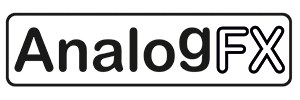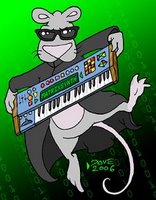Showing posts sorted by relevance for query uh!. Sort by date Show all posts
Showing posts sorted by relevance for query uh!. Sort by date Show all posts
Friday, March 21, 2025
The World's First Programmable Synthesizer and its Pulitzer Prize Winning Music
video upload by ITSPmagazine
"This synthesizer is the world's first programmable music synthesizer. The first piece of electronic music to win the Pulitzer Prize was made on it.
basically a two voice synthesizer with tone generation and composing in the left hand side and processing on the right hand side, including manual binary for the, uh, ordering of the effects processes. Um, which for its time, uh, essentially like a uh, touring computer. Um, uh, was it You know, one and a half tons, seven feet tall, 14 feet wide, it's quite a behemoth, but now it's a very large paperweight.
Watch the full video:" [The above comes in at 22:41 - vintage Buchla, Serge & more follow. See this post for the red Buchla LSD module]
How Technology is Changing the Way We Make Music | A Conversation with Seth Cluett
video upload by ITSPmagazine
"Guest: Seth Cluett, Director of Columbia University’s Computer Music Center | On LinkedIn: / seth-cluett-7631065 | Columbia University Computer Music Center Bio: https://cmc.music.columbia.edu/bios/s...
Host: Sean Martin, Co-Founder at ITSPmagazine and Host of Redefining CyberSecurity Podcast & Music Evolves Podcast | Website: https://www.seanmartin.com/
Show Notes
Music and technology have always shaped each other, and few places embody that relationship as deeply as the Computer Music Center (CMC) at Columbia University. In this episode of Music Evolves, Sean Martin sits down with Seth Cluett, Director of the Computer Music Center and Assistant Director of the Sound Art MFA program at Columbia, to explore the center’s rich history, its role in advancing music technology, and how it continues to shape the future of sound.
The Legacy and Mission of the Computer Music Center
The CMC is housed in the same 6,000-square-foot space as the original Columbia-Princeton Electronic Music Center, which dates back to 1951 and is one of the world’s oldest university-based electronic music research facilities. This was the birthplace of early electronic music, where pioneers learned to use cutting-edge technology to create new sounds. Many of those musicians went on to establish their own studios around the world, from Egypt to Japan.
The center has played a role in major milestones in music history, including the work of Wendy Carlos, a former student known for Switched-On Bach, the score for Tron, and The Shining. The first piece of electronic music to win a Pulitzer Prize was also composed here. Today, under Cluett’s leadership, the focus remains on creativity-driven technological innovation—allowing composers and artists to explore technology freely and push the boundaries of what’s possible in sound and music.
One of the center’s guiding principles is accessibility. Cluett emphasizes the importance of lowering barriers to entry for students who may not have had prior access to music technology. The goal is to make sure that anyone, regardless of background, can walk into the studio and begin working with 80% of its capabilities within the first 20 minutes.
Exploring the Labs and Studios
The episode also includes a tour of the labs and studios, showcasing some of the center’s groundbreaking equipment. One highlight is the RCA Mark II Synthesizer, the world’s first programmable music synthesizer. Built in the late 1950s, this massive machine—seven feet tall and weighing over a ton—was instrumental in shaping the sound of early electronic music. The system worked by punching holes into paper to control sound generation, similar to a player piano. While no longer in use, the CMC has collaborated with iZotope to model some of its effects digitally.
LABELS/MORE:
ARP,
Buchla,
documentaries,
exclusive,
exclusive2025,
Interviews,
mechanical,
RCA,
Serge,
test equipment
Sunday, September 09, 2007
DSI Prophet '08 Samples via Seth
Update:
"Two more samples. These aren't full tunes, they're more like examples of what you can do with the Prophet '08.
http://www.boxoftextures.com/prophet08/music/
The two snippets are called Heavy Sequence and Light Arpeggios. Heavy Sequence is rude and impolite and is done in a single patch. It's also, uh, a little rough around the edges as well. The sequencer is running on one layer and the lead is on the other. I did cheat a bit because I couldn't do two stereo channels at once into my Mac, but it more or less could have been done in one pass with only two hands (if you ignore the pitch bending, that is).
Light Arpeggios is much more polite and gentle. Both arpeggios are again done in a single patch and were recorded in a single pass live.
I then put in a lead-ish type patch on top of that to make it a little bit more interesting.
Seth"
........
"http://www.boxoftextures.com/files/choppersoverhead.mp3
Four tracks, recorded in Live:
1 - Arturia Minimoog V - arpeggios
2 - G-Force Mtron - texture chords
3 - Prophet '08 - fretless bass
4 - Prophet '08 - lead
Notes:
1 - no effects in Live, but the Minimoog V's internal chorus and echo were used as part of the sound
2 - dry
3 - a lot of reverb while it's playing alone for the first few bars at the beginning, then just a little reverb
4 - a bit of reverb
So these were my first two sounds I programmed on the Prophet '08. If you're wondering why the glide in the tune above sounds so different then what you might be used to, it's because each oscillator has its own glide knob (!) so you can set each one for a slightly different glide speed (or a greatly different speed, for that matter). This makes them reach the target note at slightly (or greatly) different times, and the sweep through the intervening frequencies happens differently for each one. Also, four LFOs is fabulous. I used one for vibrato, one for each of the oscillator's pulse width modulation, and I still had one spare.
While programming the bass sound, I held three notes and then latched the arpeggiator down. I then proceeded to spend about half an hour playing with all the controls. Man, that was fun! I wish I had recorded that on video for YouTube. I haven't touched the sequencer yet, but it looks like it'll be just as much fun. Plus, I think you get four sequences as modulation sources and can send then anywhere you want, not just for notes. How about one sequence for notes and then another for pan position? You could have each note happen in a different position in the stereo field and with a different pulse width and cutoff frequency. Add some slapback echo in your outboard gear and you're in for some real fun. You can have the thing chugging along sending notes flying all over the room. Uh, I'm patenting that one, so don't go using the idea, OK?
Oh, and just by the way, all four LFOs can be set to sync with the sequencer. Not only can you put different notes in different places in the stereo field, but you can move them once they're there.
Madness!
The knobs are - different. Not bad by any means, but I'm still getting used to them. The most fabulous thing in the world is that you can touch a knob and turn it, and when you do, the sound changes the way you expect it to. There's no jump, no turning it back and forth until you pass the stored value, they just work. On the other hand, you can't just look at a knob to see what the value is. This feels really odd when choosing waveforms, for example. Again, it's not a bad thing, but it definitely feels different than what I'm used to. On a "normal" synthesizer (i.e., a Minimoog) you look at the knob to see the values. On the Prophet you first find the knob, then you have to find the display to see what's up. It'll take a little getting used to.
Same thing with the envelopes. I've always wanted DADSR envelopes, and now that I got 'em I have to get used to them. I always pictured a steady volume for the initial delay, then the normal envelope.
Problem is, there isn't any steady volume before the ADSR portion, it's just a delay. Totally useful, but definitely not what I'm used to. There's a VCA level control, so you can have the VCA always open a little and have the envelope work the way I expected it to work, but then the VCA is always open even when you don't expect it to be.
Again, none of this is a problem with the Prophet, it's more a problem with me. I can see an incredible amount of things you can do with these, and I can also see using up the four modulation routings in seconds on a lot of patches, and I can see it may take me a little while to wrap my head around it.
In re-reading this I can see that I've said "I have to get used to it" about five times. Hmmm. I guess I'll come back to this post in a week or two to see how I feel then. I've only been knob twiddling for about three hours last night. Six months from now everything I'm noting as different will probably feel completely natural.
So, in my few hours of sound programming I ended up being surprised by what the thing could do so many times that I just can't believe it. Is this why people rave unconditionally about the Evolvers? I've always wondered why. If so, I may just have to pick one up. So much thought went into the Prophet '08. Little things like individual glide controls. Such a simple idea, but a completely unique sound.
Imagine something like oscillator sync, except that now you can apply glide to only -one- of the oscillators. Four LFOs, three envelope generators, four sequencers. Heck, you can even modulate the modulation amounts as all four modulation amounts are also modulation destinations!
The thing is brilliant. That's all I can say.
Seth"
via AH.
"Two more samples. These aren't full tunes, they're more like examples of what you can do with the Prophet '08.
http://www.boxoftextures.com/prophet08/music/
The two snippets are called Heavy Sequence and Light Arpeggios. Heavy Sequence is rude and impolite and is done in a single patch. It's also, uh, a little rough around the edges as well. The sequencer is running on one layer and the lead is on the other. I did cheat a bit because I couldn't do two stereo channels at once into my Mac, but it more or less could have been done in one pass with only two hands (if you ignore the pitch bending, that is).
Light Arpeggios is much more polite and gentle. Both arpeggios are again done in a single patch and were recorded in a single pass live.
I then put in a lead-ish type patch on top of that to make it a little bit more interesting.
Seth"
........
"http://www.boxoftextures.com/files/choppersoverhead.mp3
Four tracks, recorded in Live:
1 - Arturia Minimoog V - arpeggios
2 - G-Force Mtron - texture chords
3 - Prophet '08 - fretless bass
4 - Prophet '08 - lead
Notes:
1 - no effects in Live, but the Minimoog V's internal chorus and echo were used as part of the sound
2 - dry
3 - a lot of reverb while it's playing alone for the first few bars at the beginning, then just a little reverb
4 - a bit of reverb
So these were my first two sounds I programmed on the Prophet '08. If you're wondering why the glide in the tune above sounds so different then what you might be used to, it's because each oscillator has its own glide knob (!) so you can set each one for a slightly different glide speed (or a greatly different speed, for that matter). This makes them reach the target note at slightly (or greatly) different times, and the sweep through the intervening frequencies happens differently for each one. Also, four LFOs is fabulous. I used one for vibrato, one for each of the oscillator's pulse width modulation, and I still had one spare.
While programming the bass sound, I held three notes and then latched the arpeggiator down. I then proceeded to spend about half an hour playing with all the controls. Man, that was fun! I wish I had recorded that on video for YouTube. I haven't touched the sequencer yet, but it looks like it'll be just as much fun. Plus, I think you get four sequences as modulation sources and can send then anywhere you want, not just for notes. How about one sequence for notes and then another for pan position? You could have each note happen in a different position in the stereo field and with a different pulse width and cutoff frequency. Add some slapback echo in your outboard gear and you're in for some real fun. You can have the thing chugging along sending notes flying all over the room. Uh, I'm patenting that one, so don't go using the idea, OK?
Oh, and just by the way, all four LFOs can be set to sync with the sequencer. Not only can you put different notes in different places in the stereo field, but you can move them once they're there.
Madness!
The knobs are - different. Not bad by any means, but I'm still getting used to them. The most fabulous thing in the world is that you can touch a knob and turn it, and when you do, the sound changes the way you expect it to. There's no jump, no turning it back and forth until you pass the stored value, they just work. On the other hand, you can't just look at a knob to see what the value is. This feels really odd when choosing waveforms, for example. Again, it's not a bad thing, but it definitely feels different than what I'm used to. On a "normal" synthesizer (i.e., a Minimoog) you look at the knob to see the values. On the Prophet you first find the knob, then you have to find the display to see what's up. It'll take a little getting used to.
Same thing with the envelopes. I've always wanted DADSR envelopes, and now that I got 'em I have to get used to them. I always pictured a steady volume for the initial delay, then the normal envelope.
Problem is, there isn't any steady volume before the ADSR portion, it's just a delay. Totally useful, but definitely not what I'm used to. There's a VCA level control, so you can have the VCA always open a little and have the envelope work the way I expected it to work, but then the VCA is always open even when you don't expect it to be.
Again, none of this is a problem with the Prophet, it's more a problem with me. I can see an incredible amount of things you can do with these, and I can also see using up the four modulation routings in seconds on a lot of patches, and I can see it may take me a little while to wrap my head around it.
In re-reading this I can see that I've said "I have to get used to it" about five times. Hmmm. I guess I'll come back to this post in a week or two to see how I feel then. I've only been knob twiddling for about three hours last night. Six months from now everything I'm noting as different will probably feel completely natural.
So, in my few hours of sound programming I ended up being surprised by what the thing could do so many times that I just can't believe it. Is this why people rave unconditionally about the Evolvers? I've always wondered why. If so, I may just have to pick one up. So much thought went into the Prophet '08. Little things like individual glide controls. Such a simple idea, but a completely unique sound.
Imagine something like oscillator sync, except that now you can apply glide to only -one- of the oscillators. Four LFOs, three envelope generators, four sequencers. Heck, you can even modulate the modulation amounts as all four modulation amounts are also modulation destinations!
The thing is brilliant. That's all I can say.
Seth"
via AH.
Sunday, July 03, 2022
Analog FX SER-2020 Sound Demo (no talking) with dba Rooms and Erica Synths Zen Delay
video upload by Limbic Bits
0:00 7th dimension lead
1:15 Tiny critters IDM Lead
2:45 Wobble Bass
4:21 Melodic Techno Lead
6:07 Ring Modulator
7:46 SID Bass
8:19 Sexy Lead (Formant Mode)
8:40 Gibberish Lead (Formant Mode)
9:39 Eh-Uh-Oh-Uh-Oa-Oa-Lead (Formant Mode)
10:03 90s Psytrance Arp (Phasing)
12:25 FM Experiments Lead
12:58 Dreamer Arp
15:24 End Boss (Lead)
Tuesday, July 18, 2023
7/18/23 Roland 104 (for sale) sequences UH-lectronics telephone synth + Fairfield Circuitry + D-TWO
Note: links to listings are affiliate links for which the site may be compensated.
video upload by Cfpp0
"Fairfield Circuitry’s Unpleasant Surprise pedal eats a telephone-cum-synthesizer created by UH-lectronics, which is being sequenced by a Roland 104 sequencer from the legendary System 100. Some T.C. Electronics D-TWO too. The 104 sequencer was refurbished in 2020 by the very meticulous Tone Tweakers in NYC, which is reflected in the price at Christopher’s Boutique 489 on Reverb where it is for sale." Link below.
Update: two more videos:
7/18/23 Roland 104 sequences Metasonix RK-7 (x2), R-54 (x2), R-53, RK-2 + CXM 1978
7/18/23 Swamp Blues: Roland 104 sequences Metasonix (R-52 is a creature) + CXM 1978
via this auction
"Ergonomics are not just for the elderly! If all that Eurorack wiggling and tweaking is giving you arthritis, get yourself a vintage sequencer with big knobs made for a human hand, but fitted with with the ubiquitous 3.5mm output and input jacks.
This 104 sequencer was created as part of Roland’s classic System 100, but it is very useful with other synthesizers. I have used it on Roland’s SH 101, but mostly on Roland’s System 100m. The 104 and the 100m get along very well.
The 104 produces CV and gate, has an internal clock, and can be externally stepped. Two CV channels. Series outputs and parallel outputs. 2.5v, 5v, 10v selectable per channel. CV in on the clock! End pulse output. Plus the Step button—handy for getting your sequence to the right step before starting up the master clock, or for punching in 1/8th notes when you overdub on a song you recorded to tape, but the tape stretched and you can’t clock the sequence you wanna drop so you go manual and tap that step button.
This 104 has been fully serviced by Tone Tweakers. They call it “future-proofing” but their servicing really means it works and is dependable because they fix anything wrong with it and preemptively replace parts known to fail."
video upload by Cfpp0
"Fairfield Circuitry’s Unpleasant Surprise pedal eats a telephone-cum-synthesizer created by UH-lectronics, which is being sequenced by a Roland 104 sequencer from the legendary System 100. Some T.C. Electronics D-TWO too. The 104 sequencer was refurbished in 2020 by the very meticulous Tone Tweakers in NYC, which is reflected in the price at Christopher’s Boutique 489 on Reverb where it is for sale." Link below.
Update: two more videos:
7/18/23 Roland 104 sequences Metasonix RK-7 (x2), R-54 (x2), R-53, RK-2 + CXM 1978
7/18/23 Swamp Blues: Roland 104 sequences Metasonix (R-52 is a creature) + CXM 1978
via this auction
"Ergonomics are not just for the elderly! If all that Eurorack wiggling and tweaking is giving you arthritis, get yourself a vintage sequencer with big knobs made for a human hand, but fitted with with the ubiquitous 3.5mm output and input jacks.
This 104 sequencer was created as part of Roland’s classic System 100, but it is very useful with other synthesizers. I have used it on Roland’s SH 101, but mostly on Roland’s System 100m. The 104 and the 100m get along very well.
The 104 produces CV and gate, has an internal clock, and can be externally stepped. Two CV channels. Series outputs and parallel outputs. 2.5v, 5v, 10v selectable per channel. CV in on the clock! End pulse output. Plus the Step button—handy for getting your sequence to the right step before starting up the master clock, or for punching in 1/8th notes when you overdub on a song you recorded to tape, but the tape stretched and you can’t clock the sequence you wanna drop so you go manual and tap that step button.
This 104 has been fully serviced by Tone Tweakers. They call it “future-proofing” but their servicing really means it works and is dependable because they fix anything wrong with it and preemptively replace parts known to fail."
Tuesday, November 16, 2010
Roland Juno 6 ( underwater music)
YouTube via elfferichfour | July 05, 2009
"STOP MAKING MUSIC WITH COMPUTERS !!! START USING YOUR HANDS ! Analog synthesizer are one of the most amazing musical instruments you can imagine. The Roland Juno 6 has some great string sounds . Enjoy !"
spacy tune Juno 6
elfferichfour | May 25, 2009
"making some spacy music with my Roland Juno 6 and Korg Poly 61. The Poly 61 is triggered by Boss, DR-220 drumcomputer. Enjoy and RELAX !!!"
Tuesday, May 26, 2009
Vintage Synth Vids via HAPPY ELF
www.myspace.com/httpwwwmyspacecomhappyelf
IMPRO juno en cs 10
YouTube via elfferichfour
"I play my Juno 6 and CS-10 for more than 20 years and I still discover new sounds ! I just love those 2 old synths. Here is a video of me playing with them in my studio. I JUST CAN"T GET ENOUGH !!!!!!!!!!!1"
YAMAHA CS-10
"Can't live without him ; my YAMAHA CS-10.
Best bass sounds I have ever heard. Never let me down. listen( download for free) to 5 albums ( only analog synthesizers) at www.wmrecordings.com. New tracks at: www.myspace.com/httpwwwmyspacecomhappyelf"
YAMAHA CS-10 triggered
"An easy way to make groovy analog music is triggering a YAMAHA CS-10 by a Dr. Rhythm Dr-220. The rimclick pattern triggers the CS-10. Listen(or download) to 5 of my albums for free at www.wmrecordings.com. Have fun! New tracks at: www.myspace.com/httpwwwmyspacecomhappyelf, analog greetings from HAPPY ELF."
solina string ensemble
"Solina String Ensemble at its best ! Full sound, a little dramatic but very unique and a beautiful sound."
electropop tune
"I just trigger the Juno 6 by the DR-220 drumcomputer and play the Yamaha CS-20. There is nothing midi or computer in my shed......uh uh studio. This is the real thing !! ENJOY!!"
spacy tune
"making some spacy music with my Roland Juno 6 and Korg Poly 61. The Poly 61 is triggered by Boss, DR-220 drumcomputer. Enjoy and RELAX !!!"
IMPRO juno en cs 10
YouTube via elfferichfour
"I play my Juno 6 and CS-10 for more than 20 years and I still discover new sounds ! I just love those 2 old synths. Here is a video of me playing with them in my studio. I JUST CAN"T GET ENOUGH !!!!!!!!!!!1"
YAMAHA CS-10
"Can't live without him ; my YAMAHA CS-10.
Best bass sounds I have ever heard. Never let me down. listen( download for free) to 5 albums ( only analog synthesizers) at www.wmrecordings.com. New tracks at: www.myspace.com/httpwwwmyspacecomhappyelf"
YAMAHA CS-10 triggered
"An easy way to make groovy analog music is triggering a YAMAHA CS-10 by a Dr. Rhythm Dr-220. The rimclick pattern triggers the CS-10. Listen(or download) to 5 of my albums for free at www.wmrecordings.com. Have fun! New tracks at: www.myspace.com/httpwwwmyspacecomhappyelf, analog greetings from HAPPY ELF."
solina string ensemble
"Solina String Ensemble at its best ! Full sound, a little dramatic but very unique and a beautiful sound."
electropop tune
"I just trigger the Juno 6 by the DR-220 drumcomputer and play the Yamaha CS-20. There is nothing midi or computer in my shed......uh uh studio. This is the real thing !! ENJOY!!"
spacy tune
"making some spacy music with my Roland Juno 6 and Korg Poly 61. The Poly 61 is triggered by Boss, DR-220 drumcomputer. Enjoy and RELAX !!!"
Monday, June 23, 2008
new album preveiw......
new album preveiw...... from edison on Vimeo.
"mlr through ableton through mini kp.........st-uh-uh-ing"
Thursday, February 28, 2019
CGS Serge Modular Synth: Thoughts after 1 Year (VLOG) #TTNM
Published on Feb 28, 2019 The Tuesday Night Machines
"Uh oh ... I was told to show my face more often, so I'm trying this VLOG thing now! This is a VLOG about the 'Best of CGS' Serge modular synthesizer system and the experiences I've had with it, in my first one year of ownership. Lots of sergy links below :)"
Sunday, July 11, 2010
Neighborhood synth jam
 flickr set by mabel.sound
flickr set by mabel.sound(click for more)
"How many synthesizer nerds can there be, really, in one semi-rural central New York neighborhood? Uh...kind of a lot, actually. Jim, John, Jonathan, Jason, and Trevor gather for some noisy geekery on Ellis Hollow Creek Road."
Check out the modded Moog Prodigy.


Wednesday, July 01, 2020
Roland V-Synth Demo - D Beams for LIFE! - [NO TALKING]
Marshal Arnold
"Ah, the OG V-Synth! This was one of the first synthesizers I purchased, I remember checking this out in the music shop several times, saving my pennies! The Roland V-Synth has some really uh, unique controls like the infamous D Beams and the Time Trip Pad. I crack jokes about D Beams all the time, but I will say that are a lot of fun! Here's some factory presets to check out! I really did get lost in this synth again :)
Follow me on SoundCloud: https://soundcloud.com/marshalarnold
If you want to find out more about me, please visit my website at: http://www.marshalarnold.com"
Sunday, March 04, 2012
DX5 playing Duran Duran "A View to a Kill"
YouTube Uploaded by DX5 on Mar 4, 2012
"I did this during a studio break with almost no rehearsal (there is some mess in the middle of the track like "uh, where should I go now? Major? minor?" :-)
Gear:
Upper: Emu EMAX II
Mid: Roland JX8P
Lower: Kurzweil PC1x
Reel to reel: Revox B77 MkII
Backtrack recorded in Pro Tools first, then dumped to the Reel to reel.
Composed by Duran Duran / John Barry"
Saturday, August 21, 2010
Unicorns and Synths!
Uh Huh Her - Not A Love Song
YouTube via NettwerkMusic | August 18, 2008 Lyrics
And some synth art... and unicorn penis.
via Chris via Kat von D
Tuesday, February 12, 2019
Jexus is on Patreon

For those of you that would like to support Jexus and maybe see some new videos from him, he is now on Patreon. This was sent my way via Anatoly with the following:
"Hello. I've noticed that Jexus opened the Patreon account. https://www.patreon.com/jexus
That's what he wrote:
'I'm alive,
Hi there. So I'm making this experiment with Patreon. Please read my entry at:
http://syntezatory.net.pl/wcog_synth_patches.htm
to get the full story (well, the full FULL story will be updated soon, in February)'.
'Uh, I don't necessarily want to get $1300 per month, I want to get around $1300 for a new synth that you choose in a poll. How do I change that? On the other hand, if at least 1300 people would pledge to give me $1 per month, I think I could quit my job and just do synths'.
I don't think it's scam, as the link published on his YouTube channel."
P.S. if you aren't familiar with Jexus, see this mini documentary on him, followed by some videos by him here.
Friday, May 26, 2023
Custom Nord Lead 2X Synthesizer
Note: links to listings are affiliate links for which the site may be compensated.
via this auction
 "'What is this thing?' you may be asking. I'm glad you asked!
"'What is this thing?' you may be asking. I'm glad you asked!
Tl;dr version: it's a perfectly-functional Nord Lead 2x that has, well, seen some shit.
Longer version: Somebody (not me) once decided to "refinish" their Nord Lead 2x. They did a fairly tragic job of it (see last photo for what it looked like when I got it). I bought the synth from them, stripped the "new" paint job, hammered out some dents, designed, printed, and applied new panel labels, sprayed on some clear-coat protectant, reinforced the mod wheel, replaced the broken button, bought and installed a new set of OEM Clavia knobs, and the result is what you see here.
This synthesizer works perfectly and sounds as Nordy as you would expect. It also has some cool patches installed from the "Ambika" aftermarket sound set that I purchased. Visually, you can see from the photos that its aesthetic is now best described as, hmm, "rough-and-ready"? It has a, uh, unique visual flavor. But hey, maybe you like it. I do. I just don't have room for it and it's not getting much use.
I'm selling this as-is, given the difficult life this synthesizer has lived. I wouldn't necessarily consider it a road horse anymore, given that I can't vouch for what happened to it before I got it—IMO it has already survived a lot and deserves a nice quiet life in a studio—but ymmv.
I think this narrative explains why this is such a low price for a fully-functional Nord Lead 2x (check listings elsewhere on here for comparison) so please don't lowball me!"
via this auction
 "'What is this thing?' you may be asking. I'm glad you asked!
"'What is this thing?' you may be asking. I'm glad you asked!Tl;dr version: it's a perfectly-functional Nord Lead 2x that has, well, seen some shit.
Longer version: Somebody (not me) once decided to "refinish" their Nord Lead 2x. They did a fairly tragic job of it (see last photo for what it looked like when I got it). I bought the synth from them, stripped the "new" paint job, hammered out some dents, designed, printed, and applied new panel labels, sprayed on some clear-coat protectant, reinforced the mod wheel, replaced the broken button, bought and installed a new set of OEM Clavia knobs, and the result is what you see here.
This synthesizer works perfectly and sounds as Nordy as you would expect. It also has some cool patches installed from the "Ambika" aftermarket sound set that I purchased. Visually, you can see from the photos that its aesthetic is now best described as, hmm, "rough-and-ready"? It has a, uh, unique visual flavor. But hey, maybe you like it. I do. I just don't have room for it and it's not getting much use.
I'm selling this as-is, given the difficult life this synthesizer has lived. I wouldn't necessarily consider it a road horse anymore, given that I can't vouch for what happened to it before I got it—IMO it has already survived a lot and deserves a nice quiet life in a studio—but ymmv.
I think this narrative explains why this is such a low price for a fully-functional Nord Lead 2x (check listings elsewhere on here for comparison) so please don't lowball me!"
Monday, January 16, 2012
OP-1 Tutorial: Making a Track
YouTube Uploaded by djthomaswhite on Jan 16, 2012
"With NAMM 2012 coming I wanted to take inventory of the current OP-1 capabilities and to address some of the questions I have been getting from sharing my OP-1 videos here on YouTube. I take the "start from scratch" approach and show how to make a basic track loop. I make house music so you can expect some deep house vibes. It's a long video (30 mins) so here is a summary of what is included:
- Erasing all 4 tape tracks
- Making a drum sequence in Pattern sequencer
- Setting up loop sections
- Navigating loop sections
- Recording sequences to tape (in time)
- Chord memory techniques
- Recording live keys to tape
- Overdubbing to tape
- Recording to different tracks
- Sampling to the Synth sampler
- Playing with sampled sounds
The OP-1 is a very capable tool for production. It is not a toy... it just looks like one to many people. Others see the simplistic interface as a refined means to an end. Whatever your stance may be, the OP-1 and the money I spent was worth it to me, by far. I am rejuvenated and want to to be creative again. It's kind of like my early set up with a Roland R8 drum machine, Roland JV-35 keyboard (borrowed) and Alesis MMT-8 Sequencer put down to DAT recorder (only a stereo pair of tracks! Oh my). Necessity can be inspiring! Limits to memory, space on tape, tracks are a test to me... a test I need to pass. This makes me think of really out og the box ways to get things done. I don't just pull a preset solution out of a 2 terabyte hard drive somewhere. I hope you find the tutorial interesting and that it may inform you on how to use your new OP-1, or that you now need to buy one, or that you are now sure it's not for you (perfectly okay too). Thanks for stopping by to check out another one of my videos.
Don't forget to check the unofficial (but best) OP-1 Forum for samples, user support and the latest TE rumors. Ohpeewon dot com
NOTE: This video is a tutorial and has a lot of talking. It's a balance of explanation and actions, and is not really meant for adapt OP-1 users. And, "yes", to the nitpickers I know I say "familiar" as "fur-miliar" LOL. My grandma says "warsh" instead of wash" so I guess it runs in the family. Sue me. It was 2:30am and the aged 18 year Scottish grain spirits were mellowing me out. Slàinte mhath! • [ slanj'-uh va' ] - ("Good Health" in English)"
Sunday, August 22, 2010
Synth Shop Hieber-Lindberg, Munich, Germany
via cheater cheater:
"I thought your readers could be interested that there's
such a nice place in Munich for synths.. it's not exactly Five G but
then they don't have to fly to Japan for it.. :)
Hi guys,
Last Saturday I have visited the music shop Musikhaus Hieber-Lindberg
in Munich, Germany. I was tipped off by Florian, who said it could be
interesting. You can find their website at
http://www.hieber-lindberg.de (unfortunately only in German, but it's
easy to find your way around, and Google Translate works well)
The Shop
"I thought your readers could be interested that there's
such a nice place in Munich for synths.. it's not exactly Five G but
then they don't have to fly to Japan for it.. :)
Hi guys,
Last Saturday I have visited the music shop Musikhaus Hieber-Lindberg
in Munich, Germany. I was tipped off by Florian, who said it could be
interesting. You can find their website at
http://www.hieber-lindberg.de (unfortunately only in German, but it's
easy to find your way around, and Google Translate works well)
The Shop
Saturday, June 10, 2017
Dreadbox Abyss - Twiddling With and Exploring the Sounds
Published on Jun 10, 2017 ProckGnosis
"WARNING: a bit lengthy listen to the Dreadbox Abyss, 4-voice analog(ue) synthesizer (I tried to cut the length down, but obviously failed). This is NOT a review, and there's no talking past the introduction. It's basically a big sound sampler focusing on chords, with a bit of lead and bass thrown in as well.
When it comes to synths, this thing is retro-in-a-box. And I'm talking sound most of all. And in case you were wondering, the opening ProckGnosis theme for this video was done only with the Abyss and some VST drums.
Top 4 things I've discovered so far:
- If you want that "Boards of Canada" drifting oscillator sound (more recently overexposed in the "Stranger Things" soundtrack), this thing nails it
- The hybrid delay really does create a great chorus effect (the Erebus should be able to do this too, but I've never tried)
- Just a touch of "drive" on the VCA helps make the sound even more classic and...uh...not sure really, but I describe it as "dirty" in the video
- The selection of variable wave shapes sort of pushes this into OB6 territory, and being able to easily modulate the waves really pumps some life into the sound
Again, hats off to Dreadbox for this kind of stuff. I said somewhere, yeah, it's just a synthesizer, but they do it just a little bit differently, and that really makes it something more unique in the field of synths. Cheers!"
Sunday, August 10, 2025
EMS -Synthi E 1975 Vintage Modular Synthesiser demonstration
video upload by Richard Scott
"Just renovated by the excellent Constantin at Portabellabz. It recently came into my position after sitting in a cupboard unheard for decades. It is weird cranky, and the controllers are uh, unpredictable but it certainly has some charm. This is just recorded on my phone using the Synthi's internal speaker. It even runs on batteries,though I haven't tried it yet"
Thursday, August 01, 2024
Bach Invention no. 1 in C major on synth
video upload by Aurum Fusion
"Playing Johann Sebastian Bach's Invention Number 1 in C Major, BWV 772 on a Prophet 10 Rev 4 synth.
-
So, uh, it's been a while huh? I haven't really been active with this project for like a whole decade, but I've been needing a solo project again. So I'm planning on posting things more often as Aurum Fusion again! And right now, I'm pretty interested in getting my playing chops back up to speed, so I thought it would be fun to (re)learn a bunch of classical stuff and play it on synth for y'all. So here's a first one! Enjoy."
Wednesday, December 16, 2009
Buddha machine, FM3, , ...uh!? "Gristleism" !
YouTube via exhadley
"'Gristleism' is a sound generator in a box, that contains 13 loops. It almost like the FM3 buddha but with a different aproach ;)"
NEXT PAGE
HOME
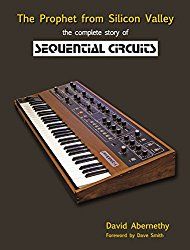
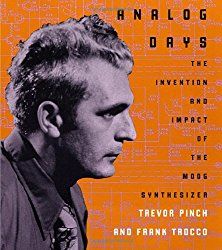
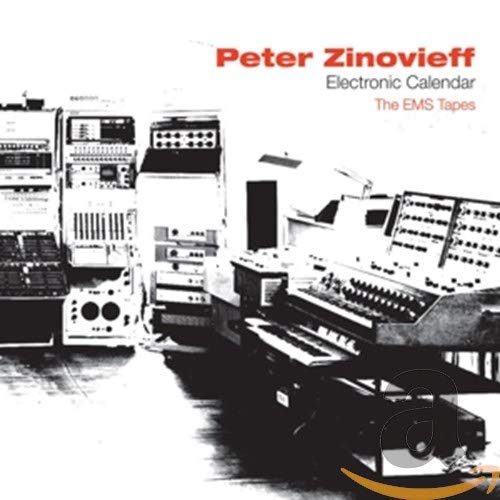
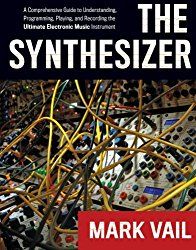
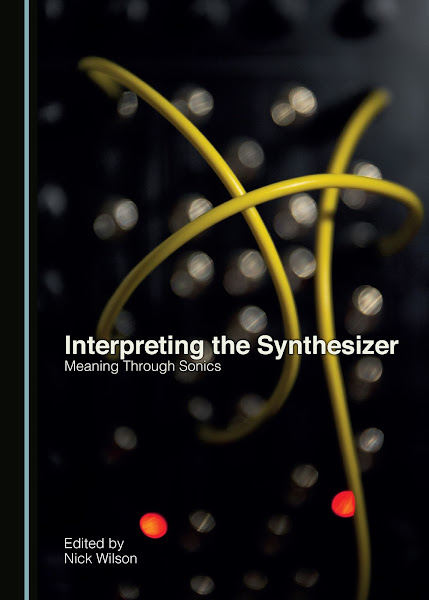
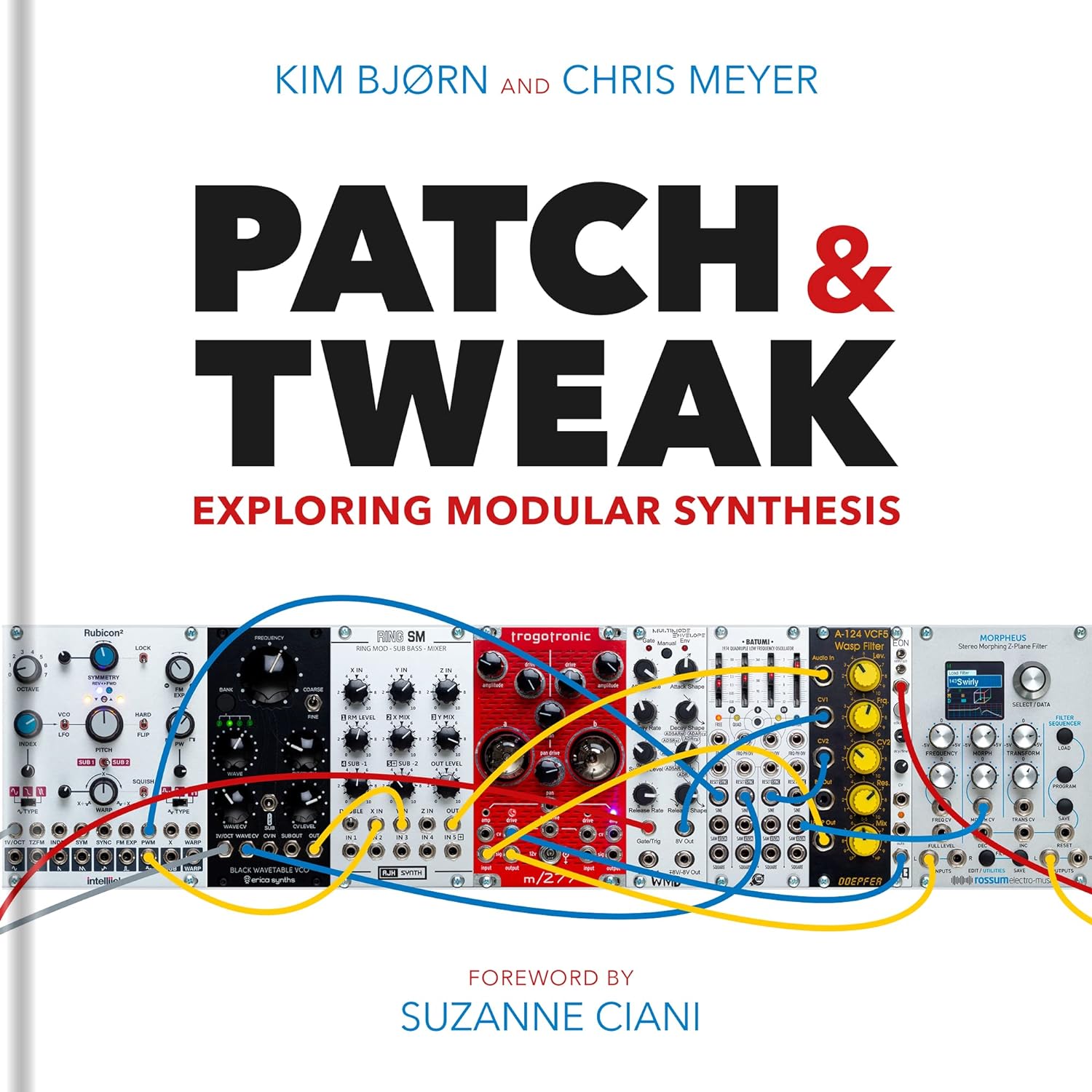

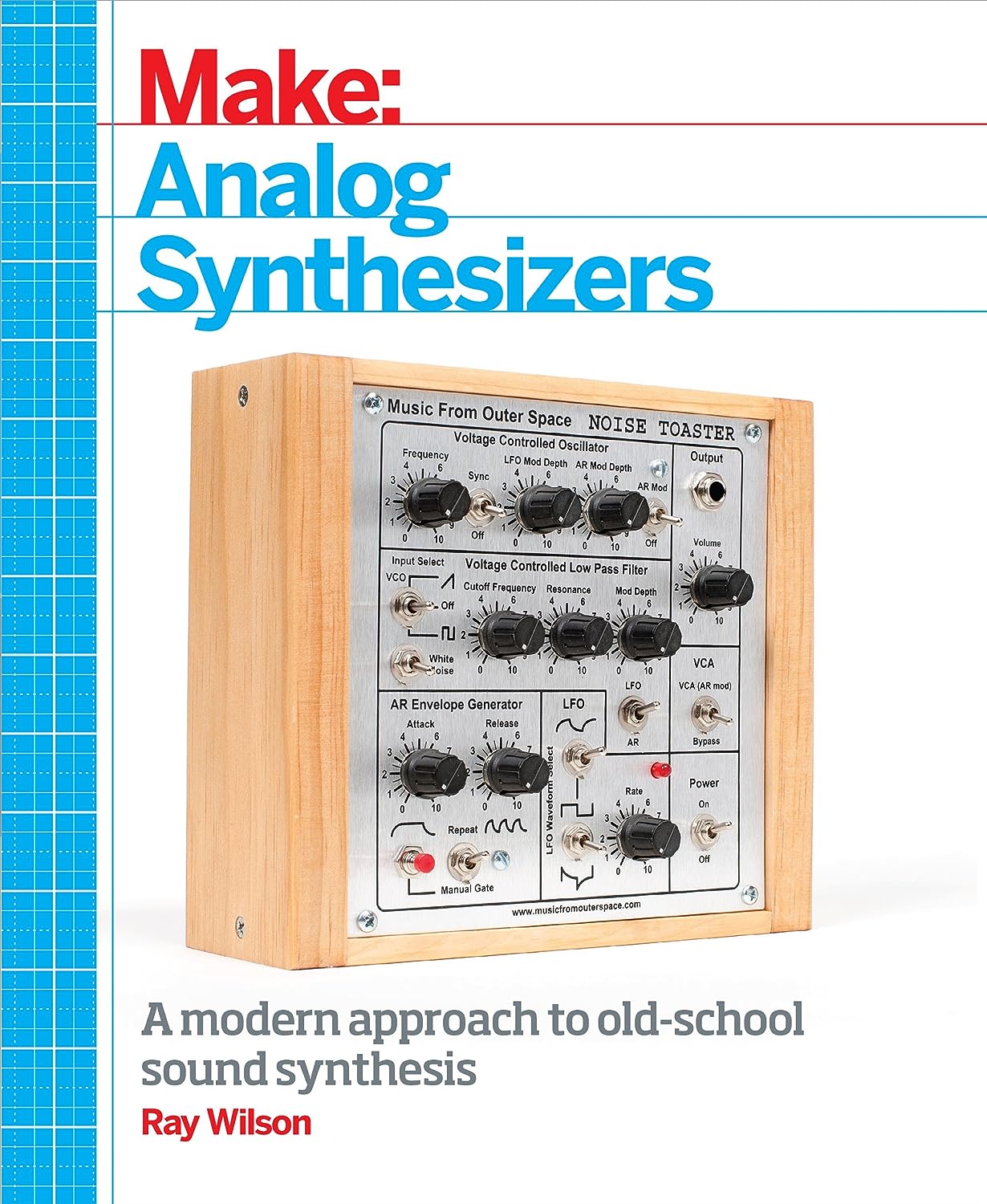
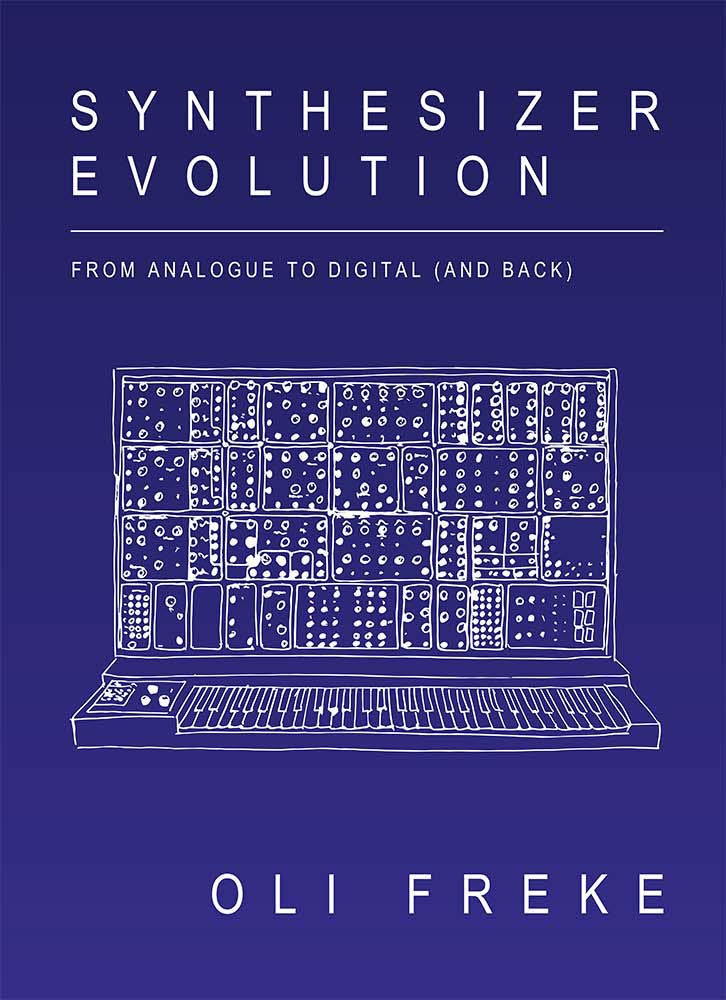
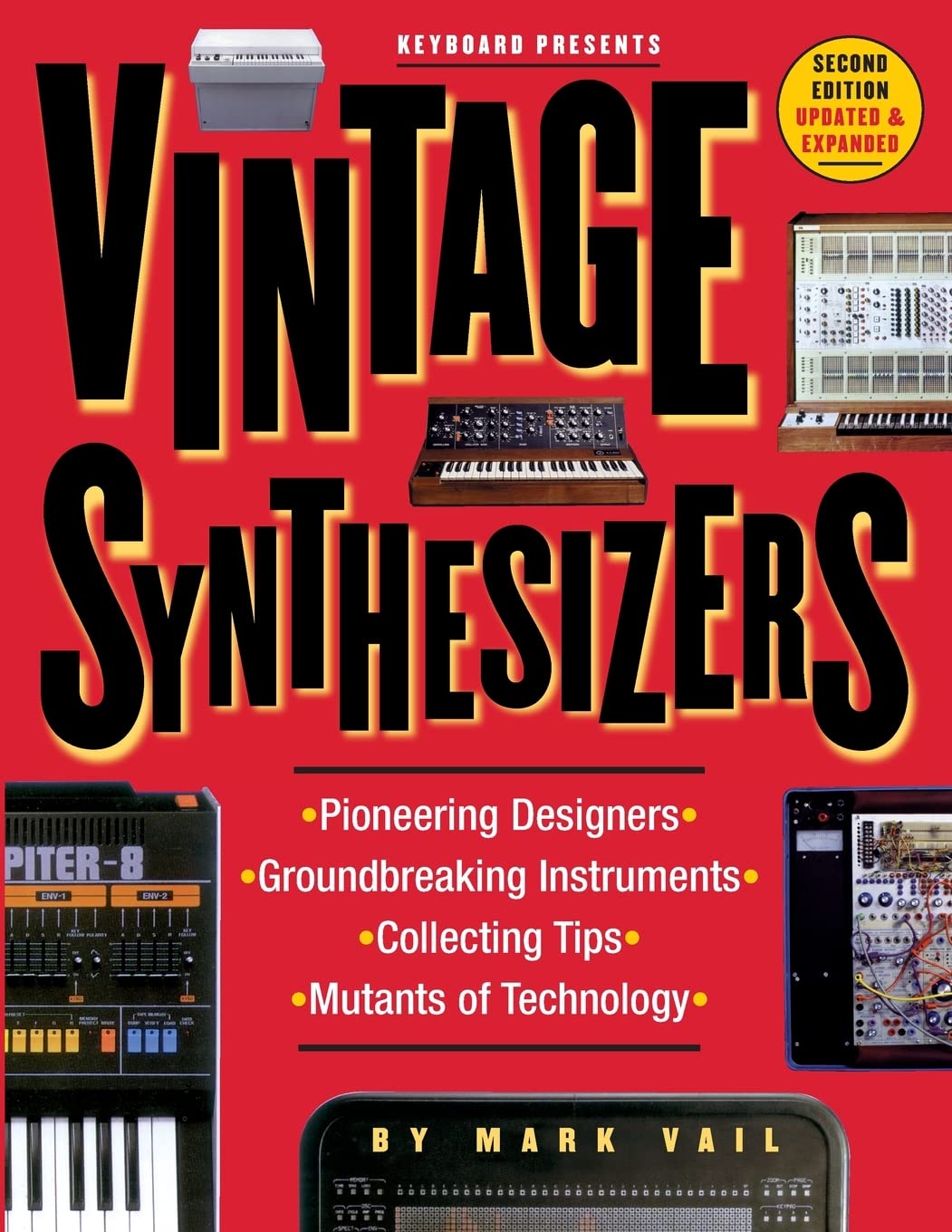
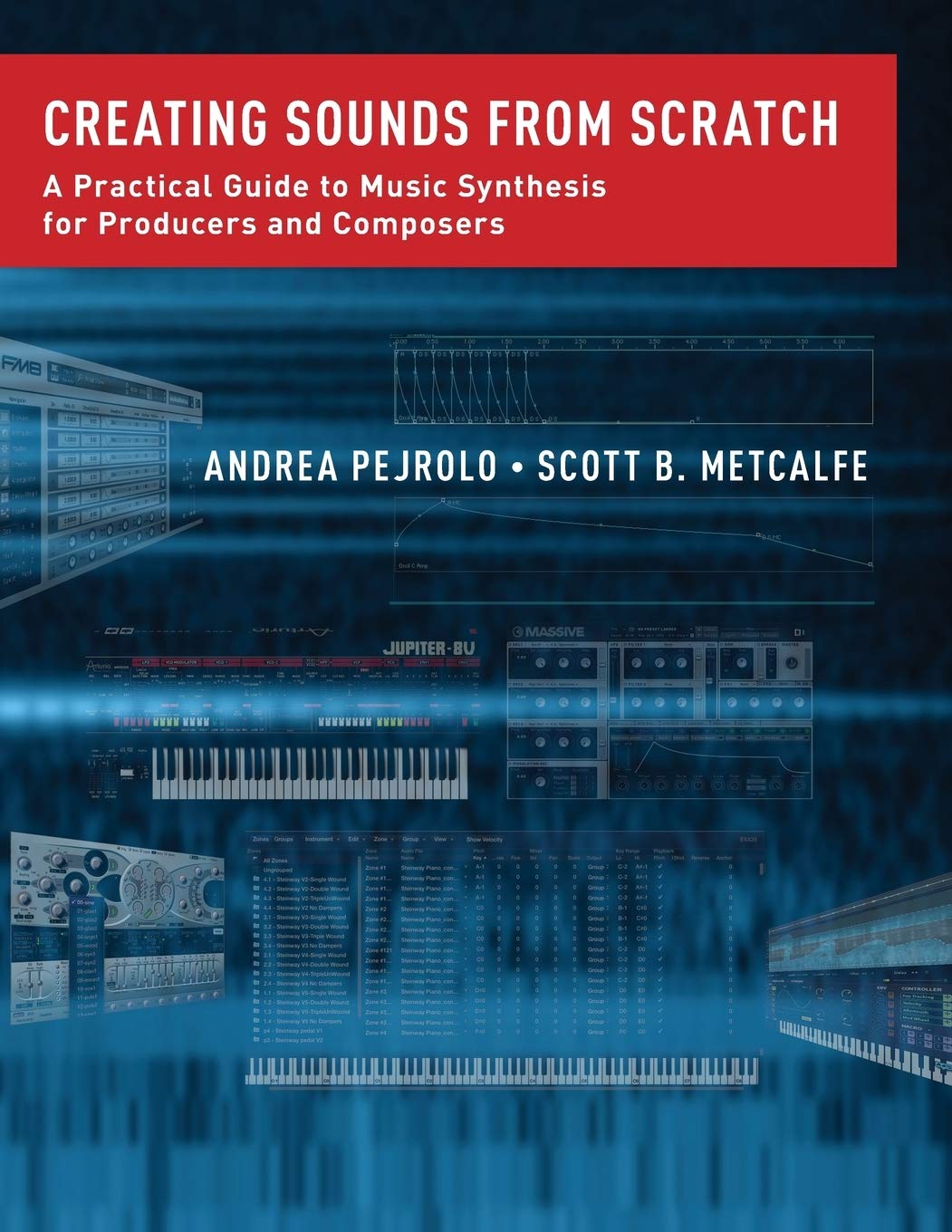
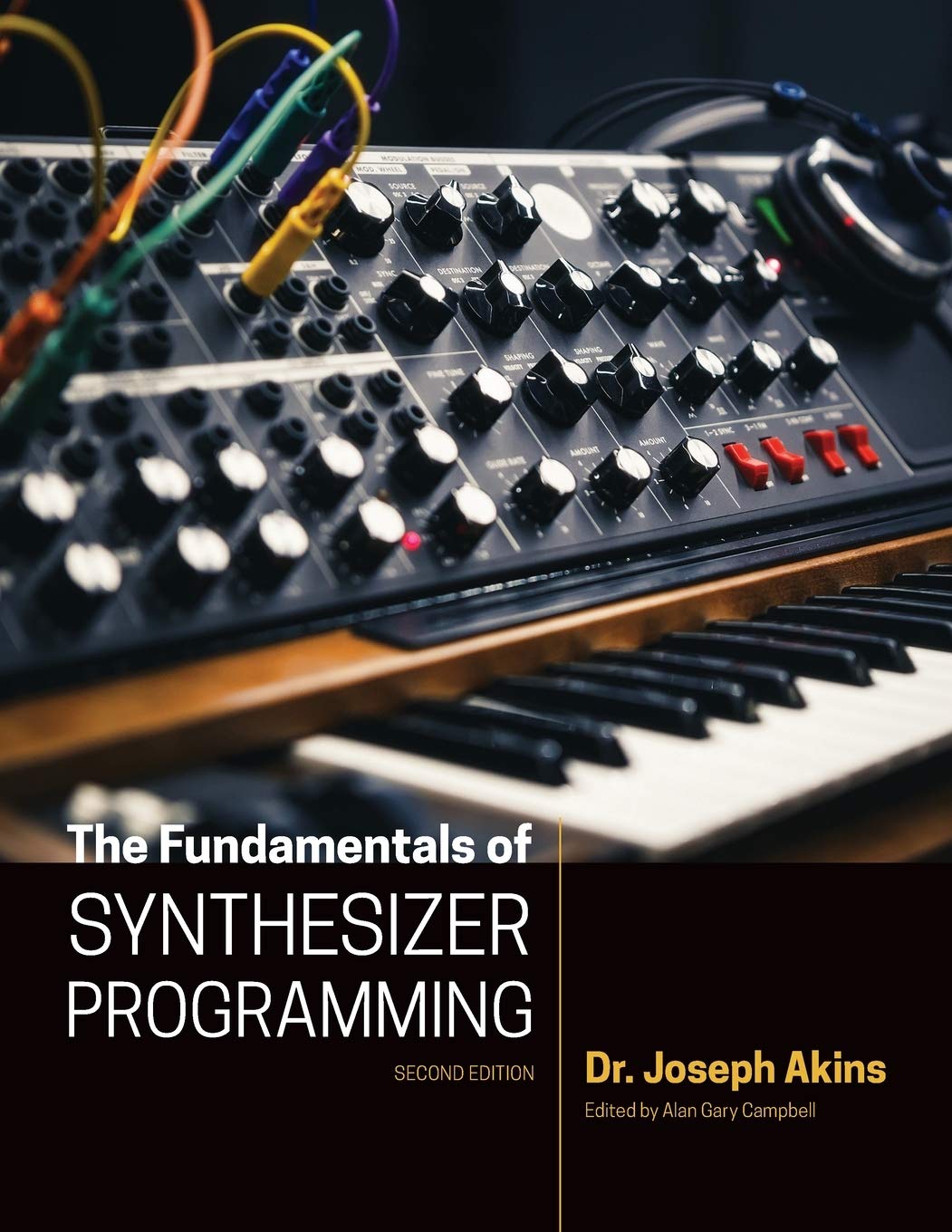

© Matrixsynth - All posts are presented here for informative, historical and educative purposes as applicable within fair use.
MATRIXSYNTH is supported by affiliate links that use cookies to track clickthroughs and sales. See the privacy policy for details.
MATRIXSYNTH - EVERYTHING SYNTH













© Matrixsynth - All posts are presented here for informative, historical and educative purposes as applicable within fair use.
MATRIXSYNTH is supported by affiliate links that use cookies to track clickthroughs and sales. See the privacy policy for details.
MATRIXSYNTH - EVERYTHING SYNTH
















